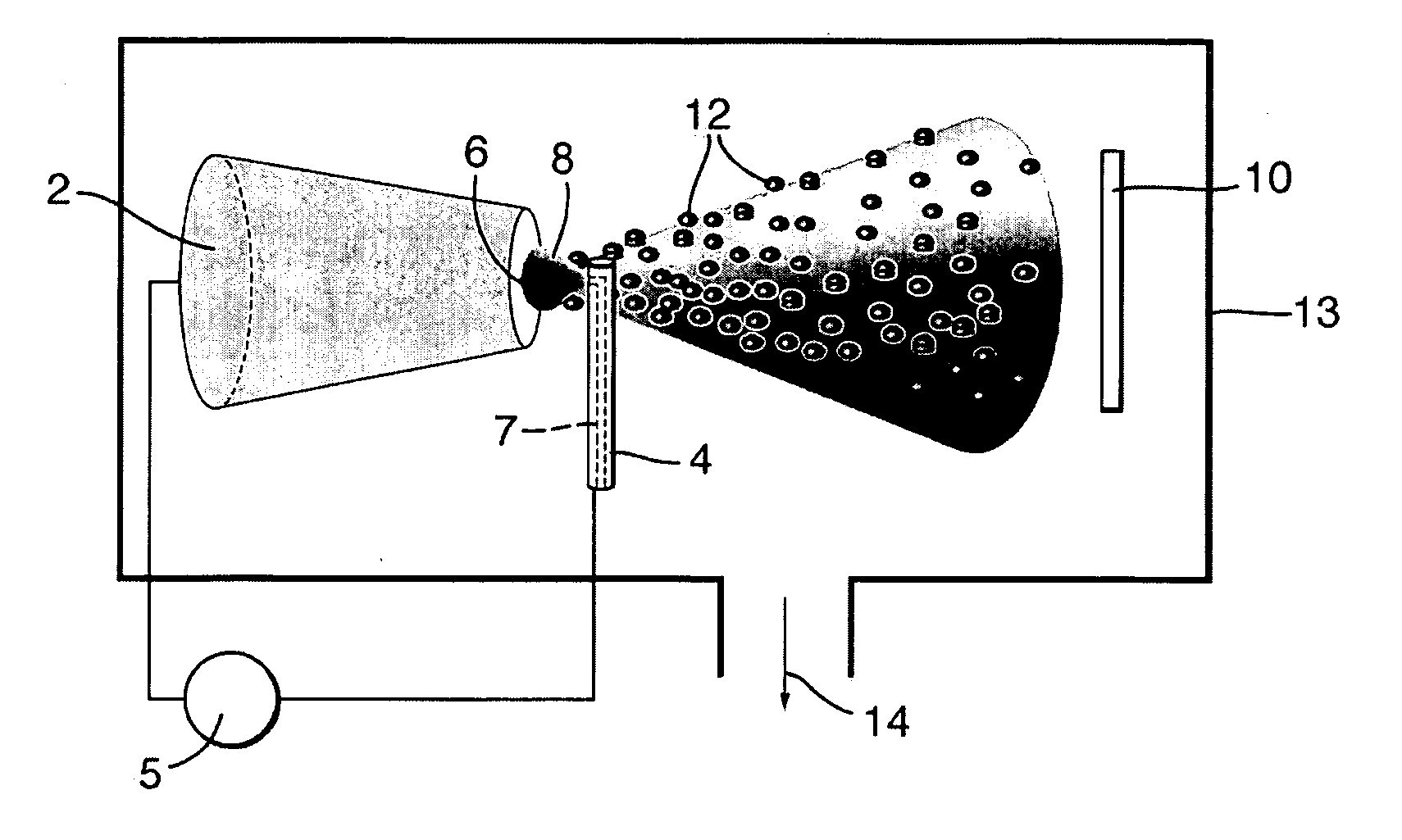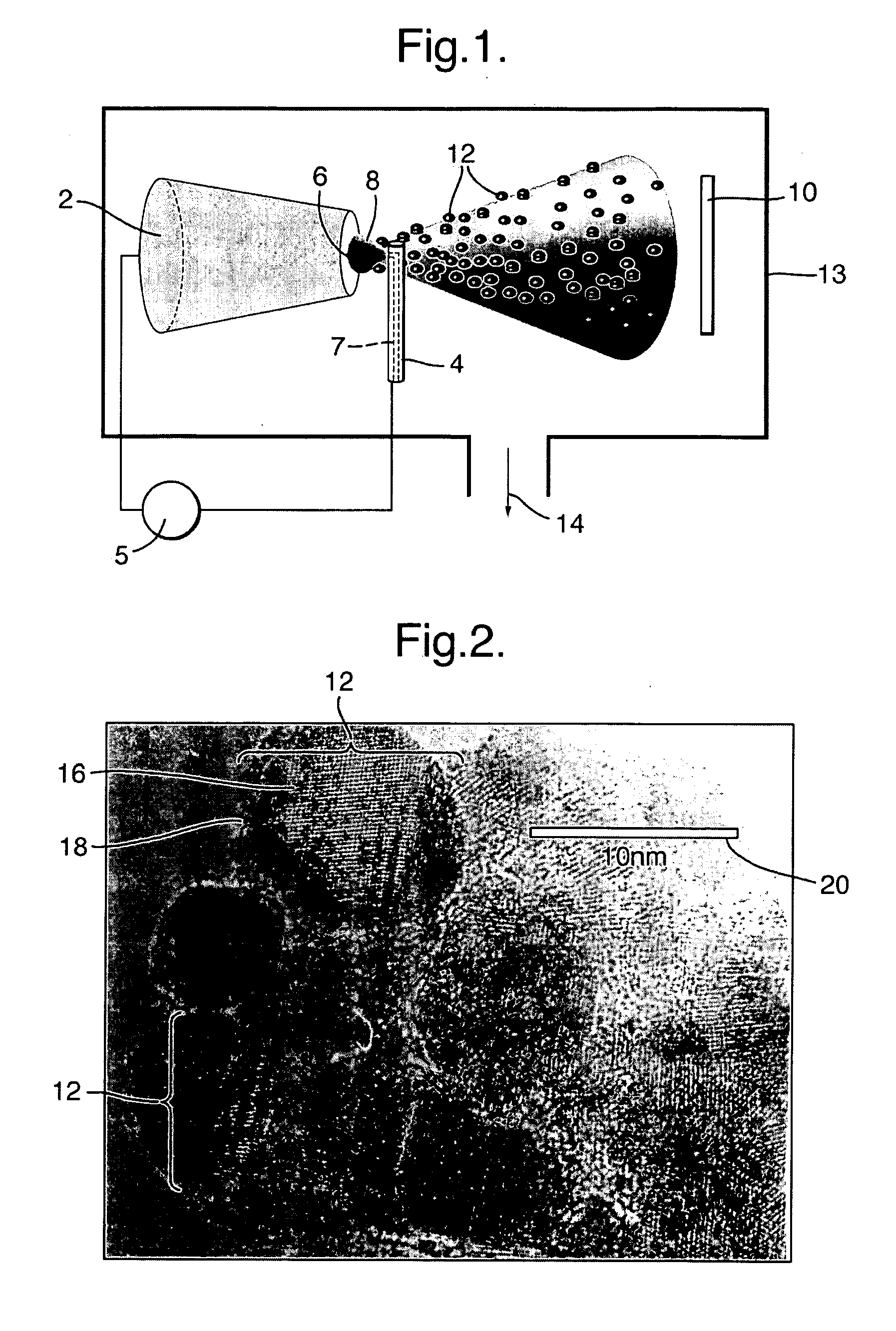Forming nanostructures
a nanostructure and nanotechnology, applied in the field of forming nanostructures, can solve the problems of inability to use the nanowire produced by this process in the industry, inability to automate the reliable manipulation of individual nanowires, and inability to collect and manipulate individual nanowires in a relatively time-consuming and laborious process, so as to achieve efficient formation and simple and cost-efficient installation
- Summary
- Abstract
- Description
- Claims
- Application Information
AI Technical Summary
Benefits of technology
Problems solved by technology
Method used
Image
Examples
Embodiment Construction
[0046]FIG. 1 shows schematically an apparatus for producing nanoparticles in accordance with an embodiment of the present invention.
[0047] The particles are of a metallic material and are provided for the method of forming a nanowire or a nanotube in accordance with embodiments of the present invention. In the case of the embodiments to be described in the following specification, the particles are nanoparticles, each of which has at least one dimension on the nano-scale. The metallic material in this embodiment is cobalt carbide (CO3C) which is an alloy of a ferromagnetic material which in this case is the metal cobalt (Co). The cobalt carbide is formed using a carbon arc technique.
[0048] The carbon arc technique involves a cathode 2 formed of graphite, and an anode 4 formed of a mixture of compressed graphite and cobalt powders. The mixture comprises approximately 30-50% by weight of cobalt. A voltaic arc is initiated between the cathode 2 and the anode 4 using a DC electric pow...
PUM
| Property | Measurement | Unit |
|---|---|---|
| temperature | aaaaa | aaaaa |
| temperature | aaaaa | aaaaa |
| temperature | aaaaa | aaaaa |
Abstract
Description
Claims
Application Information
 Login to View More
Login to View More - R&D
- Intellectual Property
- Life Sciences
- Materials
- Tech Scout
- Unparalleled Data Quality
- Higher Quality Content
- 60% Fewer Hallucinations
Browse by: Latest US Patents, China's latest patents, Technical Efficacy Thesaurus, Application Domain, Technology Topic, Popular Technical Reports.
© 2025 PatSnap. All rights reserved.Legal|Privacy policy|Modern Slavery Act Transparency Statement|Sitemap|About US| Contact US: help@patsnap.com



